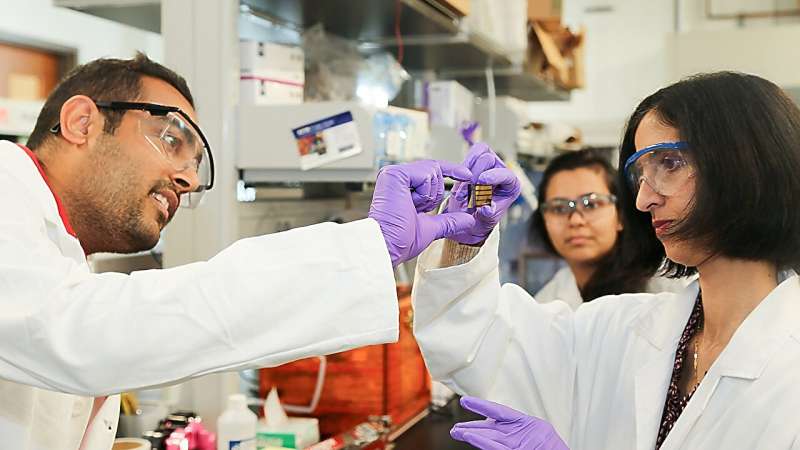This article has been reviewed according to Science X's editorial process and policies. Editors have highlighted the following attributes while ensuring the content's credibility:
fact-checked
peer-reviewed publication
trusted source
proofread
National network of biomedical engineers offer a six-step roadmap to diversify faculty hiring

A team of scientists from over a dozen of the nation's top bioengineering programs have created a roadmap for developing and implementing a hiring process aimed at increasing diversity among biomedical engineering faculty.
Their report, "Equitable hiring strategies towards a diversified faculty," was published in Nature Biomedical Engineering and stems from concerns that hiring processes to increase diversity in engineering have been largely unsuccessful despite best efforts.
The authors—including Tejal Desai, dean of Brown University's School of Engineering—present six major steps that deans, department chairs, faculty and administrators can take to overhaul their hiring processes.
Among the areas of focus are detailed guidelines on how to prepare and plan for a search, how to interview inclusively, and how to showcase a department or institution's vision on diversity. All are founded on evidenced-based best practices as well as the collective experiences of the authors.
"One of the key take-home messages is that we really need to think about our process ahead of time, gain buy-in and align ourselves with the values that we think are important within the department and the institution in order to then create a holistic process that will allow for a diverse set of candidates to be evaluated," Desai said. "In this paper, we're calling on our collective bioengineering community across the nation to at least examine what they're doing and to think about the different steps of the process from recruiting, to initial interviews, to evaluations and then to negotiation and beyond. What steps can we take to make it both a more transparent and equitable process?"
The project spawned out of a national network of biomedical engineers called BME Unite, who came together in 2020 to educate themselves on diversity, improve representation and combat racism in STEM fields.
The group has formed several subcommittees that have published papers in scientific journals focused on issues of bias and lack of representation in academia, including a paper published in Cell in 2022 calling for an end to discrimination in research funding that disadvantages Black scientists.
"Only by bringing together bright minds from our entire human population, and not just a slice of it, will we solve the biomedical problems most pressing in our society and world," Desai said.
One of the primary goals of the new commentary is to encourage practices that actively recruit a more diverse group of applicants and improve the rate of Ph.D. graduates from historically underrepresented groups who go on to become biomedical engineering faculty members.
In 2019, for example, only 4.4% of total Ph.D. degrees in the U.S. earned in engineering were awarded to students from historically underrepresented groups in the field, including people who identify as Black, Latino and American Indian. Similarly, women accounted for only 24% of new Ph.D.s in engineering, according to the paper.
Throughout the paper, the researchers emphasize the importance of developing consistent rubrics with detailed criteria to evaluate candidates.
They cite studies showing that a lack of strict criteria can often lead to less diverse hiring. For example, without strict criteria, if a hiring manager likes a candidate, whatever qualities that person has can become the priority for the position. Unbiased practices like evaluation rubrics can level the playing field for candidates who come from historically underrepresented groups, the researchers write in the paper.
In addition to finding a diverse pool of candidates and using rubrics to evaluate them, the researchers offer several other focal points, including creating and sustaining a culture where faculty members from historically underrepresented groups will thrive.
When it comes to "interviewing inclusively," the researchers recommend being transparent about the interview process, collecting independent feedback after interviews, and advocate for including students in the process along with faculty who will make candidates feel comfortable.
The researchers make clear in the paper that not all the actions laid out in their roadmap will work for all departments or institutions. They hope, however, that their suggestions will serve as a starting point for conversations about how to improve the hiring process in biomedical engineering and the engineering field in general.
More information: Elizabeth M. Cosgriff-Hernandez et al, Equitable hiring strategies towards a diversified faculty, Nature Biomedical Engineering (2023). DOI: 10.1038/s41551-023-01076-4
Journal information: Nature Biomedical Engineering , Cell
Provided by Brown University





















